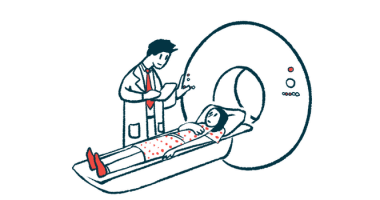24 New CLN6 Gene Mutations Found in Patients in Middle East, Africa

Two dozen new mutations in the CLN6 gene were identified in nearly 100 people, mostly from the Middle East and North Africa, with CLN6 Batten disease, a study shows.
These findings “confirm the genetic and ethnic [variability] of CLN6 disease,” and are expected to “raise awareness for CLN6 disease and reduce the time from first symptoms to diagnosis for patients and their relatives worldwide,” the researchers wrote.
The data come from “one of the largest [groups] to date of genetically diagnosed CLN6 patients screened at a single center,” according to the scientists.
As such, the results expand the spectrum of disease-associated CLN6 mutations and identify those more frequent in these underrepresented populations, the team said.
The study, “Clinical and genetic characterization of a cohort of 97 CLN6 patients tested at a single center,” was published in the journal Orphanet Journal of Rare Diseases.
Batten disease, also known as neuronal ceroid lipofuscinoses (NCLs), comprises a group of neurodegenerative conditions characterized by the toxic accumulation of waste molecules in the body’s cells. It mainly affects brain cells, and leads to nerve cell damage and death.
To date, Batten has been associated with different mutations in more than 13 genes. Those in the CLN6 gene have been linked to late-infantile (onset at 2–4 years) and juvenile Batten (onset at 5–10 years), as well as to the very rare adult form of the disease.
Common manifestations of CLN6 Batten disease include loss of coordination (ataxia), seizures, vision impairment, and developmental regression.
“Because these are shared by other neurological diseases, identification of CLN6 genetic variants is imperative for early diagnosis,” the researchers wrote.
Now, a team from Centogene GmbH, a leader in genetic diagnostics for rare diseases, described the demographic, clinical, and genetic data of 97 people genetically diagnosed with CLN6 disease at their center between 2010 and 2020.
The patients were from 20 countries — most commonly those in the Middle East (59%) and North Africa (32%). Most (87%) were unrelated individuals, but 12 (13%) comprised familial cases.
The majority of patients (86, comprising 89%) had late-infantile Batten. Eight individuals (8%) had juvenile Batten, the most common form of the disorder, and three (3%) had adult-onset disease. Among those with adult-onset, two had been diagnosed with Kufs disease type A, and one with teenage-onset progressive myoclonic epilepsy.
The median age of onset ranged from less than a month old to 15 years, and the time from disease onset to referral ranged from less than one month to 8.3 years. The median age at referral was 5.8 years for late-infantile patients, 9.8 years for juvenile-onset patients, and between 22.5 and 33.2 years for the three individuals with adult-onset.
Clinical symptoms, provided for 86 patients, were consistent with previous reports. The most common were developmental regression (53%), seizures (43%), ataxia (33%), and intellectual disability (30%). Also, after nervous and musculoskeletal systems, the eye was the third most affected organ, with reports of variable symptoms.
Genetic testing identified 45 different CLN6 gene mutations, of which 42% were classified as disease-causative or likely disease-causative. Genetic variants with a higher likelihood of resulting in a faulty CLN6 protein were found in 21% of cases and made up 33% of all mutations.
A total of 24 of these mutations (53.3%) had not been previously reported. One of these was classified as disease-causative, seven as likely disease-causative, and 16 as variants of uncertain significance.
Notably, certain mutations appeared to be associated with specific forms of the disease and geographical regions.
The most common, and likely disease-causative variant — c.794_796del (p.S265del) — was exclusively found in both copies of the CLN6 gene in 30 patients with late-infantile onset Batten.
The c.83G > A (p.R28K) mutation was exclusively present in three of the eight unrelated juvenile-onset patients and “could be characteristic of this disease onset type,” the researchers wrote.
Also, the most frequent new variant — c.257A > G (p.H86R) — was detected in five of the 23 unrelated Egyptian patients, but not in patients from other countries. The c.794 796del (p.S265del) mutation was present in 22 (38.6%) of 57 Middle Eastern patients, and in seven (22.6%) of 31 North African patients.
Cases carrying newly discovered mutations were most frequently from Egypt and Iran, where these variants were present in more than half of patients.
“Our study significantly expands the number of published clinical cases and the mutational spectrum of disease-associated CLN6 variants, especially for the Middle Eastern and North African regions,” the researchers wrote.
These geographical regions were “underrepresented in the previous dataset compared to Europe and North America,” they added.
“Including CLN6 in the genetic diagnosis is recommended for individuals presenting with developmental regression, seizures, ataxia, intellectual disability, and [eye] symptoms,” the team concluded.







